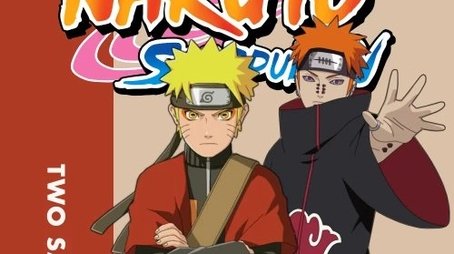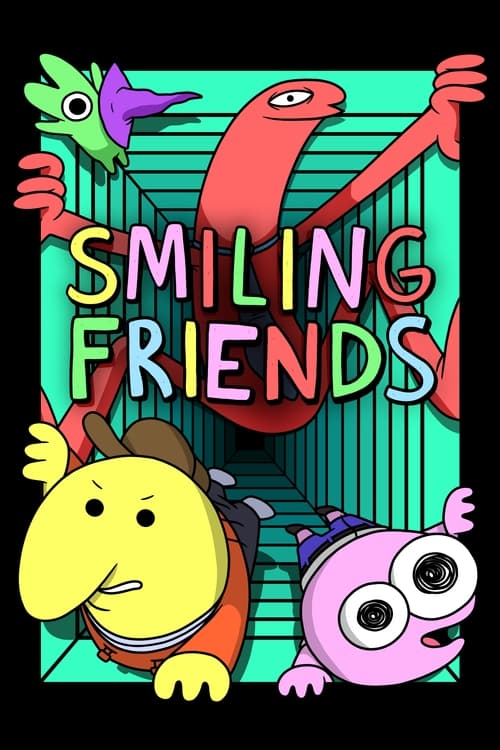
Ask Your Own Question
What is the plot?
The episode begins with Naruto Uzumaki and Sakura Haruno arriving at the battlefield where they find Kakashi Hatake and the injured Sai. They are in the midst of a confrontation with the Akatsuki member, Deidara, who has just unleashed his explosive clay creations. The tension is palpable as Naruto, filled with determination, vows to protect his friends and defeat Deidara.
As the battle escalates, Deidara uses his clay creations to attack, showcasing his artistic abilities. He sends a swarm of explosive clay birds towards Naruto and his team. In response, Naruto taps into his chakra, preparing to counter the assault. Sakura, demonstrating her growth, uses her medical ninjutsu to heal Sai, who is struggling to recover from his injuries. The urgency of the situation drives her to push her limits, showcasing her resolve to support her teammates.
Kakashi takes charge of the situation, strategizing on how to deal with Deidara's aerial attacks. He instructs Naruto to use his Shadow Clone Jutsu to create multiple copies of himself, which confuses Deidara and allows them to gain the upper hand. The clones engage Deidara, distracting him long enough for Kakashi to prepare a more powerful attack. The teamwork displayed by the group highlights their growth and unity as a team.
Deidara, realizing he is being overwhelmed, decides to escalate the battle by using his ultimate technique, the C0 explosion, which is capable of massive destruction. He prepares to detonate himself, intending to take out Naruto and his friends in the process. The stakes are raised as the team realizes the imminent danger they are in. Naruto, driven by his desire to save his friends, rushes towards Deidara, determined to stop him at all costs.
In a desperate move, Naruto channels his chakra into a Rasengan, aiming to disrupt Deidara's technique. The scene is intense as Naruto pushes through the pain and fear, embodying the spirit of a true ninja. Just as Deidara is about to detonate, Naruto's Rasengan collides with Deidara's clay, creating a massive explosion that engulfs the area. The impact is felt throughout the battlefield, and the dust settles, leaving the fate of the characters uncertain.
As the smoke clears, it is revealed that Deidara has been defeated, but at a great cost. The team is left to grapple with the aftermath of the battle, reflecting on their experiences and the bonds they have forged. Naruto, though victorious, feels the weight of the loss and the sacrifices made during the fight. The emotional toll of the battle resonates with each character, highlighting their individual struggles and growth.
The episode concludes with Naruto and his friends regrouping, vowing to continue their mission and protect their village. They understand that the fight against the Akatsuki is far from over, and they must remain vigilant. The determination in their eyes signifies their commitment to each other and their resolve to face whatever challenges lie ahead.
What is the ending?
In the ending of "Naruto Shippūden" Season 8, titled "Two Saviors," Naruto and Sakura confront the powerful enemy, Pain, who has devastated their village. After a fierce battle, Naruto ultimately defeats Pain, showcasing his growth and determination. Pain, in his final moments, reveals his true intentions and the pain he has endured, leading to a moment of understanding between him and Naruto. The episode concludes with Naruto's resolve to bring peace to the world, while Pain sacrifices himself to revive those he had killed, leaving a lasting impact on Naruto and the village.
As the episode begins, the scene is set in the ruins of Konoha, the Hidden Leaf Village, which has been ravaged by Pain's assault. The air is thick with tension and despair as the villagers mourn their losses. Naruto, having just returned from his training, is filled with a mix of anger and determination. He rushes to the scene, his heart pounding with the desire to protect his home and friends.
In a dramatic confrontation, Naruto faces Pain, who stands amidst the destruction, embodying the very chaos that has befallen the village. The two engage in a fierce battle, showcasing their respective abilities. Naruto, fueled by the memories of his friends and the pain of loss, taps into the power of the Nine-Tails, transforming into a formidable force. The clash is intense, with each attack resonating with the emotional weight of their conflicting ideologies.
As the fight progresses, Naruto's resolve deepens. He recalls the teachings of his mentor, Jiraiya, and the importance of understanding one's enemy. This realization leads him to seek a different approach. Instead of simply defeating Pain, he aims to understand the pain that drives him. The battle reaches a climax when Naruto, in a moment of vulnerability, expresses his desire for peace and his belief in the possibility of redemption.
Pain, taken aback by Naruto's words, reveals his own tragic backstory. He shares the pain of losing loved ones and the cycle of hatred that has consumed him. This moment of vulnerability creates a bridge between the two, as Naruto sees the humanity in Pain, despite the destruction he has caused. The emotional weight of their confrontation shifts from a mere battle to a dialogue about suffering and the quest for peace.
In a pivotal moment, Pain decides to sacrifice himself to revive those he had killed during the attack on Konoha. This act of redemption signifies a profound change in his character, as he chooses to atone for his actions. As he uses his remaining strength to bring back the fallen villagers, Naruto watches, filled with a mix of sorrow and hope. He understands that true strength lies not just in power, but in the ability to empathize and forgive.
The episode concludes with Naruto standing amidst the recovering village, reflecting on the lessons learned from his encounter with Pain. He vows to continue his journey towards peace, determined to break the cycle of hatred that has plagued the world. The final scenes depict the villagers slowly rebuilding their lives, symbolizing resilience and the possibility of a brighter future.
In the aftermath, Naruto emerges as a beacon of hope for the village, while Pain's sacrifice leaves a lasting legacy that influences Naruto's path forward. The episode encapsulates the themes of understanding, redemption, and the enduring struggle for peace, marking a significant turning point in Naruto's journey as a ninja and a leader.
Is there a post-credit scene?
In Naruto Shippūden, season 8, titled "Two Saviors," there is no post-credit scene. The episodes in this season focus on the intense battles and emotional developments surrounding the characters, particularly Naruto and Sasuke, as they confront their pasts and the choices that have led them to their current paths. The narrative culminates in significant character moments and does not include any additional scenes after the credits. The focus remains on the main storyline and character arcs without extending into post-credit content.
What is the significance of the title 'Two Saviors' in this season?
The title 'Two Saviors' refers to the duality of Naruto Uzumaki and Sasuke Uchiha as they both play pivotal roles in the unfolding events. Naruto embodies the hope and determination to save his friends and the village, while Sasuke, despite his darker path, is also seen as a potential savior due to his unique abilities and the burden of his past. Their intertwined fates and contrasting ideologies highlight the complexities of their characters.
How does Naruto's relationship with Sasuke evolve in this season?
In this season, Naruto's relationship with Sasuke is marked by a deep sense of longing and determination. Naruto is resolute in his belief that he can bring Sasuke back to the village, showcasing his unwavering loyalty and friendship. This emotional struggle is palpable as Naruto grapples with feelings of helplessness and frustration, yet he remains hopeful, reflecting his growth as a character and his commitment to saving his friend.
What role does Pain play in the events of this season?
Pain, as the leader of the Akatsuki, plays a crucial role in this season by challenging Naruto's ideals and testing his resolve. Pain's attack on the Hidden Leaf Village serves as a catalyst for Naruto's transformation, pushing him to confront the harsh realities of the world and the cycle of hatred. The emotional confrontation between Naruto and Pain is pivotal, as it forces Naruto to articulate his beliefs about peace and understanding, ultimately shaping his path as a future leader.
What are the key moments in Naruto's battle against Pain?
Naruto's battle against Pain is filled with intense moments that showcase his growth and determination. Key moments include his initial confrontation where he uses his new Sage Mode abilities, allowing him to sense and counter Pain's attacks. The emotional climax occurs when Naruto, after defeating Pain, chooses to spare him, demonstrating his commitment to breaking the cycle of hatred. This decision is a turning point, highlighting Naruto's evolution from a vengeful fighter to a compassionate leader.
How does the theme of redemption manifest through the character of Nagato (Pain)?
Nagato, also known as Pain, embodies the theme of redemption throughout this season. His backstory reveals the pain and loss that shaped his worldview, leading him to believe that pain is necessary for peace. As he confronts Naruto, he begins to question his own beliefs and the path he has taken. The emotional exchange between them culminates in Nagato's realization of the possibility of redemption, ultimately leading him to sacrifice himself to revive those he had killed, thus completing his arc of seeking forgiveness.
Is this family friendly?
Naruto Shippūden, season 8, titled "Two Saviors," contains several themes and scenes that may be considered objectionable or upsetting for children or sensitive viewers. Here are some aspects to be aware of:
-
Violence and Combat: The series features intense battles with physical confrontations, including injuries and the use of jutsu (ninja techniques) that can be graphic in nature. Characters may be shown in pain or suffering from injuries.
-
Death and Loss: Themes of loss are prevalent, with characters facing the death of loved ones or comrades. This can evoke strong emotional responses and may be distressing for younger viewers.
-
Emotional Turmoil: Characters experience deep emotional struggles, including feelings of betrayal, loneliness, and despair. These themes can be heavy and may resonate strongly with sensitive viewers.
-
Dark Themes: The storyline delves into darker aspects of human nature, such as revenge, hatred, and the consequences of war. These themes may be complex and difficult for younger audiences to fully understand.
-
Mature Relationships: There are elements of complex relationships and emotional bonds that may not be suitable for younger viewers, as they explore themes of love, sacrifice, and loyalty.
While the series is generally aimed at a younger audience, these elements may require parental guidance for children or may be upsetting for sensitive individuals.











